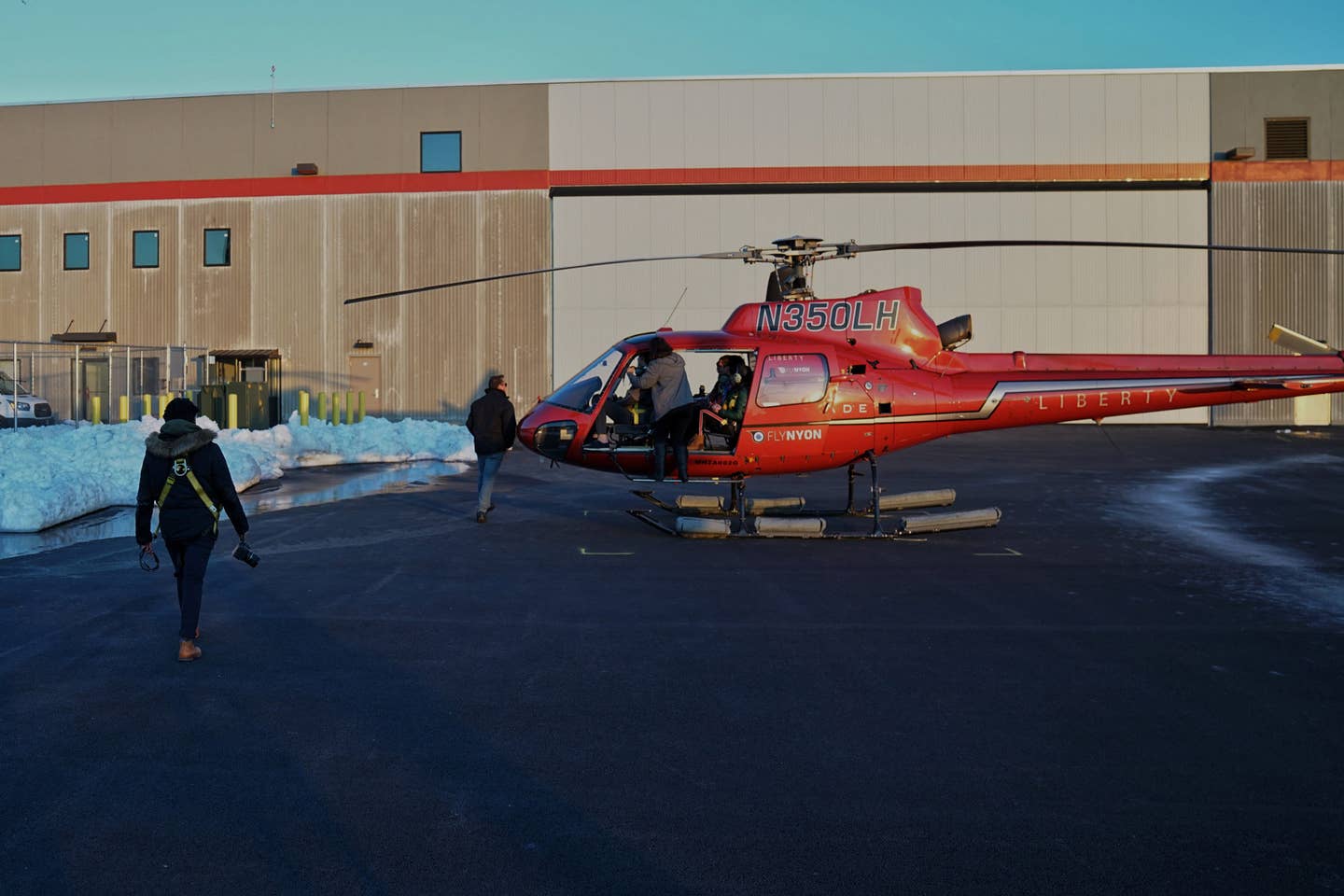
N350LH prior to takeoff, with one pilot and five passengers on board Eric Adams/@EricAdams321
Viewing the Manhattan skyline from any vantage point is impressive, but when seen from aloft the Big Apple skyline becomes a breathtaking experience. In March 2018, a New York tour operator launched an Airbus AS350 helicopter with a pilot and five passengers for what was expected to be a 30-minute dusk flight near the East River. The spectacular element of the flight—in addition to flying at 500 feet—was that most of the helicopter’s doors were removed, allowing passengers to extend their feet outside the machine. Riders were kept in their seats by a special restraining system that needed to be cut off during an emergency. The preflight briefing included instructions from the pilot on how to locate and use the cutting tool for the harnesses if it were needed.
That afternoon, a piece of a passenger restraint system became tangled in the helicopter’s cockpit fuel shutoff valve, flaming out the engine and forcing the helicopter down into the East River. Just before the helicopter struck the water, the pilot activated the emergency floats designed to stabilize the machine once it settled on the water. On this flight however, the inflation system malfunctioned and only the left float fully inflated. Because of the imbalance, the helicopter flipped over in the water, submerging the cabin. The pilot managed to escape, but none of the helicopter’s five passengers were so lucky. All drowned after being unable to free themselves of their primary seatbelts and the supplementary restraints.
The NTSB investigation into the accident discovered a secondary full body harness created by the tour operators had been installed on the helicopter from off-the-shelf components not installed by the manufacturer. The system consisted of a nylon fall-protection harness that was attached at the occupant’s back. A small pouch was attached to the harness and contained a cutting tool.
The NTSB on Tuesday strongly urged the FAA to “close a loophole that allows certain doors-off sightseeing flights to operate under an ‘aerial photography’ exception to the tougher federal regulations and oversight that most commercial air tours operate under. The investigation determined the helicopter’s landing was survivable. The pilot, wearing an FAA-approved restraint, escaped. However, the five passengers, each fitted with a NYONair-provided harness/tether system—secured with two locking carabiners—were not able to detach the restraints before or after becoming submerged upside down in the dark, 40-degree water.”
The Board also said, “Contributing to the crash was the deficient safety management of both Liberty and NYONair, who did not adequately address the foreseeable risks associated with these flights, such as having passengers attached with tethers moving around in a helicopter with vital floor-mounted controls. The companies also did not recognize the difficulty passengers would have escaping from the harnesses with only the emergency cutting tool they were each provided, a tool similar to automobile seatbelt cutters.”
NTSB Chairman Robert L. Sumwalt said, “These companies were knowingly exploiting a [air tour] loophole to avoid stronger regulation and oversight and people died because of it. These types of doors-off flights with dangerous supplemental restraints that could get tangled or caught on something and hamper escape ought to stop before others get hurt.” The board recommended that the FAA develop and implement a single set of national safety standards for all air tour operations.
In the days following the accident, the NTSB issued an urgent safety recommendation “urging the FAA to prohibit all open-door commercial passenger-carrying aircraft flights that use supplemental passenger restraints, unless the harness system allows passengers to rapidly release the harness with minimal difficulty and without having to cut or forcefully remove it. While the FAA issued an emergency order that required operators to demonstrate the ability of restraints to be quickly released, the NTSB remains concerned that the very use of any supplemental restraints could interfere with aircraft operations or hamper the escape of passengers during an emergency.”
Other recommendations include urging the agency to provide guidance to operators who carry passengers for hire on how to identify intoxicated or impaired passengers and require all commercial air tour operators to implement a safety management system to identify and mitigate safety hazards, provide regular safety assessments and continuously improve an organization’s overall level of safety.

Subscribe to Our Newsletter
Get the latest FLYING stories delivered directly to your inbox






